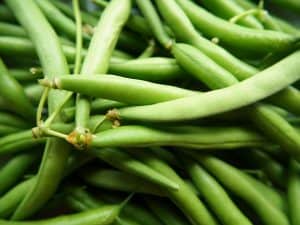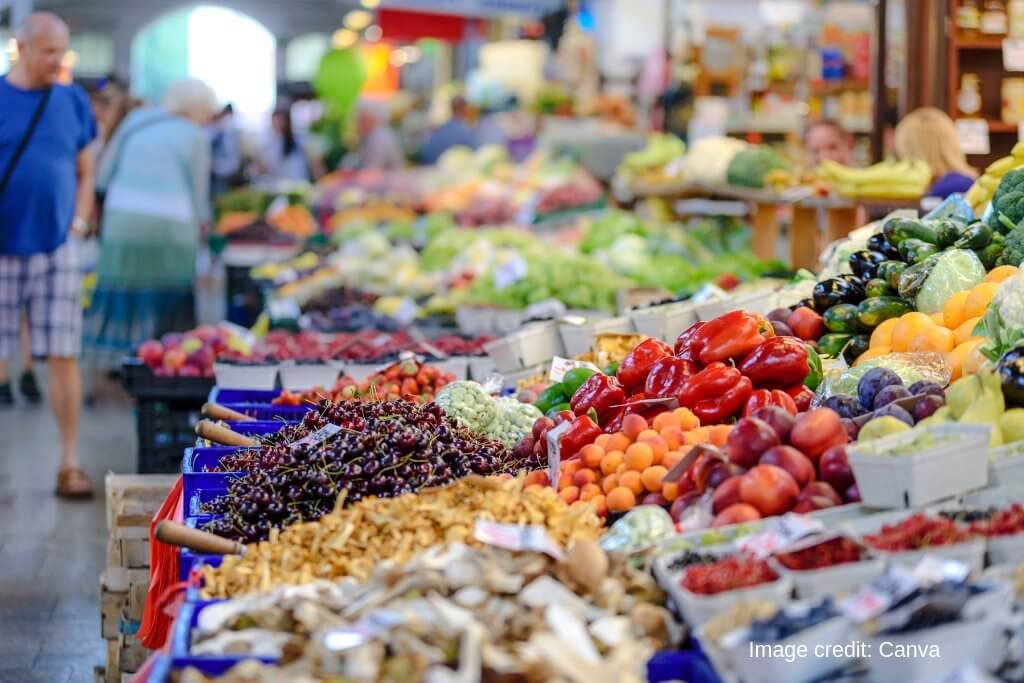
How to grow french beans is quite straightforward. French beans, also known as snap or green beans, and locally in Kenya as mishiri, are a major export crop. Interest in french beans farming is fast-growing for both fresh consumption and processing (mainly canning and freezing). French beans contain protein, fat, calcium, iron, phosphorus, vitamins A, B, D and starch. French beans grow well in lower midland to lower highland zones of altitudes ranging from 1500-2100 metres above sea level.
Rain-fed cultivation is possible in areas with well-distributed, medium to high annual rainfall of 900-1,200mm per annum. However, to maintain continuous supply especially during the off-season, irrigation is essential. Up to 50mm of water per week is required. French beans can grow in different soil types, ranging from sandy, loam to clay. The optimum temperature for production is 20-25°C. However, the beans survive in temperature ranging from 14-32°C depending on the variety. Seedlings will not tolerate temperature lower than 10°C. They, however, grow well on friable (easily crumbled), silty loam to heavy clay soils,. which are well-drained and high in organic matter.

Before planting the french beans, consider knowing the nutrient & chemical status of your soil. The optimum soil pH is 6.5 to 7.5, but french beans can tolerate a low pH of up to 4.5. Below a pH of 4.5, plant growth is impaired through limitation of development of the rhizobium bacteria that are responsible for the nitrogen fixation in the galls formed on the bean roots. It’s advisable to carry out a soil test before planting. Various varieties are grown mainly for export, and they are determined by the market preference.
French beans are sown directly into the seed bed. The land should be ploughed and harrowed properly just before planting. With irrigation, French beans can be grown all-year round but the main export season is from October to May. Spacing should be single rows of 30x15cm (a seed per hole) or double rows of 60x30cm. The spacing will depend on the variety, soil fertility, water availability as well as climate. It is advisable to plant in blocks of about four rows separated by a path of about 50cm.
French beans seed rate required is 25-60kg/ha (10-24kg/acre) of certified seeds depending on the variety. Apply 200kg/ha (80kg/acre) DAP along the rows before planting or as per the recommendations given in your soil test results. Contact between fertilizer and seed should be avoided by mixing the former thoroughly with the soil in the planting furrow. Apply 150kg/ha (60kg/acre) Calcium Ammonium Nitrate (CAN) for top-dressing twice or as per the recommendations given your soil test results. First when two to three leaves appear and the second at the beginning of flowering.
Climbing varieties that grow to about 1.8m (6ft) high need to be supported. This is done by use of trellises, poles, or other means at least 200cm (8ft) high.
The main diseases in french beans farming include rust, angular leaf spot,root rots, bacterial blights, anthracose, bean common mosaic virus, powdery mildew and downy mildew. To control these diseases, farmers are advised to use crop rotation, tolerant varieties, field hygiene, health certified seeds, and recommended insecticides and fungicides.
Picking of pods begins six to eight weeks after planting, depending on the area and variety, and continues for about one to two months. The pods are carefully picked, and not pulled from the plants, and should have the stalk attached to them. Picking should be done at regular intervals depending on buyer specifications.
Harvesting may be done twice a week for the fine beans and three times a week for the extra fine beans. This continues for around three weeks. One gets yields of nine to 15 tonnes/ha and six tonnes/acre in 21/2 months.
1) Extra fine pods: Are very tender, turgid, seedless, with no strings, and free from any defects. The width of the pods (maximum diameter) should be less than 6mm and the minimum length of 10cm.
2) Fine pods may have small seeds and be short with soft strings, be turgid and tender. The width of the pods should be between 6-9 mm while the length of 12-14 cm is recommended.
3) Bobby beans comprise those which do not qualify for inclusion in the higher classes but satisfy the minimum requirements specified above. Beans should be reasonably tender and seeds should not be too large.
Avoid use of excess nitrogen as it may promote vigorous vegetative growth at the expense of pod production. Foliar feeds are recommended to boost crop development and production. The choice of the fertiliser depends on the fertility of the soil, soil test recommendations and variety requirements. Farmyard manure is also recommended especially where soils are low in organic matter. It should be applied in planting furrow and worked into the soil at the rate of 10 tonnes/ha. A kilo of seeds requires 4-8kg of fertiliser depending on the variety and soil conditions..”

The major buyer of French beans is the European Union. The export market in Kenya falls into two major seasons: The low demand season runs mostly from June to September every year. It is characterised by lots of supply from those who produce with the long rains and low demand from the EU market as they can produce their own by then. The high demand season usually runs from September to around March. During this period, EU markets face winter and their only option is to import and that is when Kenyan farmers benefit from production.
It is advisable to observe strict hygienic standards while washing, processing and packing export products. The beans should not have chemical residues. Rejection of the produce if they do not meet the set quality standards. Poor disease and pest management can lead to poor quality produce.
Adopted from the Floriculture Magazine May – June 2019
Order our services and get to know how to improve your soil for better yeilds.